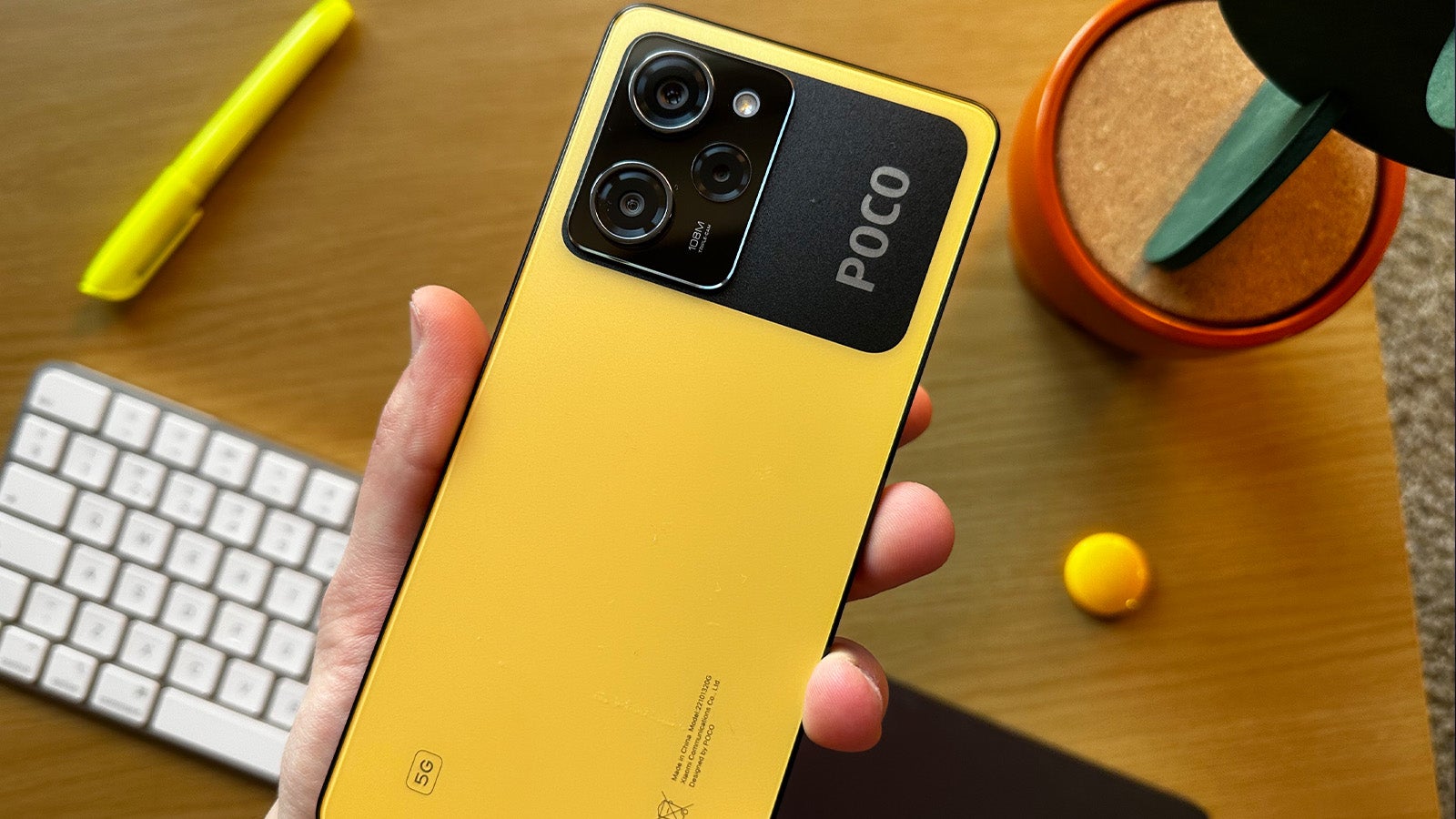Just under a year after the X5 and X5 Pro launch, the Poco has brought out its newest flagship handset, the X6 Pro. This launch was expected to provide multiple upgrades and changes to the previous X5 Pro flagship model.
Despite both being fairly evenly matched in specifications, there are notable differences. Keep reading to learn more about how the Poco X6 Pro and X5 Pro compare on key factors, such as their design, camera and performance.
Pricing and availability
The slightly older of the two, the Poco X5 Pro launched in February 2023, whereas the X6 Pro launched in January 2024. Even so, both are currently evenly matched in price in both the UK and EU and are retailing for £369/€349.90.
Neither are available in the US.
Design
The Poco X5 Pro and X6 Pro are very similar in their design, as they both feature straight edges and slightly rounded corners, and have a 6.67-inch screen.
All of the X5 Pro models have a textured plastic panel, whereas two of the three available X6 Pro models have a high-gloss plastic back. The X5 Pro comes in a choice of three colours, Yellow, Blue and Black, and the X6 Pro comes in Yellow, Grey and Black. The yellow X6 Pro, however, has a vegan leather back, making it a good option for those who hate the dreaded fingerprint mark.
For screen brightness, the X6 Pro is significantly brighter than the X5 Pro. While the X6 Pro has a maximum brightness of 1800 nits, the X5 Pro trails in comparison and only reaches 900 nits at its peak. This is also lower than its cheaper counterpart, the X5.
Despite this, the X5 Pro meets the HDR standards of HDR10+ and Dolby Vision. The X6 Pro also has HDR10 support, but what isn’t listed on the specification sheet is the Dolby Vision standard. Our X6 Pro reviewer, Luke Baker, however, said that their “Netflix app can display Dolby Vision content on this phone as well.”

Camera
Both handsets feature a trio of cameras at the rear and a 16MP selfie camera, however the X5 Pro bizarrely boasts a higher 108MP main camera compared to the X6 Pro’s 64MP. It’s worth pointing out though that although the X5 Pro has a megapixel count twice as big, we found in our reviews this didn’t necessarily make a huge difference in photo quality.
Our X6 Pro reviewer found that its “main camera, however, is very decent. There’s plenty of detail, the colours look realistic and the HDR effect is more natural than we’ve seen from some other devices.”
And while our X5 Pro reviewer, Connor Jewiss, said “images taken with the main snapper are crisp, and boast vibrant colours” he does mention that “zoom into an image (or simply get a little closer) and detail seems to melt away. Sharpness seems to fall apart quite quickly, resulting in muddied and somewhat blurry images. With a 108MP main sensor, this isn’t what I’d expect.”


Performance
The Poco X5 Pro runs the latest MIUI 14 skin of Android, whereas the X6 Pro is one of the first phones to ship with Xiaomi’s new operating system, HyperOS, installed. As its predecessor, HyperOS promises more dynamic and smoother animations than MIUI 14.
Although this seems like a significant difference, our reviews found that HyperOS is “almost identical to MIUI.”
Even so, the X6 Pro also runs on the powerful MediaTek Dimensity 8300-Ultra processor, compared to the X5 Pro’s mid-range Snapdragon 778G chipset that was released back in 2021. This is a considerably older chip compared to its successors, and in comparison to the 8300-Ultra which is usually reserved for higher-end smartphones.
Our X6 Pro reviewer said that they “never found its performance to be lacking, even during heavy multitasking” whereas our X5 Pro reviewer says “when you try to multitask, you can feel things slowing down on the phone. It’s something you can work around, for sure, but you’re left wanting more.”
In our benchmark tests, the X5 Pro received a 786 single-core score and a 2988 multi-core score, whereas the X6 Pro received a 1424 single-core score and 4403 multi-core score which means the latter is significantly more powerful.
Battery Life
Both the Poco X6 Pro and X5 Pro have a relatively large 5000 mAh battery, so unsurprisingly the two are evenly matched for battery performance. Our benchmark tests showed that after 60 minutes of Netflix streaming, the X6 Pro lost 8% of charge, marginally higher than the X5 Pro’s 7% loss.
Both handsets also support fast charging up to 67W, but our benchmark tests actually showed the X6 Pro to be marginally faster than the X5 Pro, taking just 45 minutes to get from 1-100% compared to 68 minutes.











